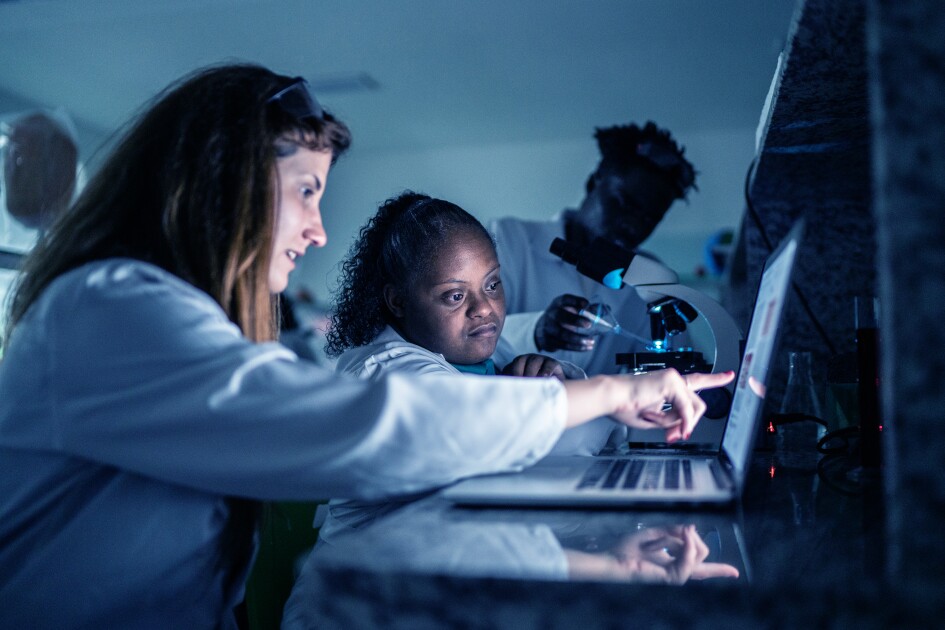
05 Feb What the Feds Want Schools to Know
Assistive technology—from visual timers to help students with learning differences keep track of their schedules to digital captioning software for those with hearing difficulties—can improve outcomes for students in special education if states and districts take full advantage of those tools, concludes guidance released recently by the U.S. Department of Education.
The Individuals with Disabilities Education Act—the main federal law governing special education—has long required school teams developing an Individualized Education Program for students in special education to consider if assistive technology is needed to provide a particular student with a quality education, said Glenna Wright-Gallo, the assistant secretary in the Office of Special Education and Rehabilitative Services in an email.
But this is the first time the department has released guidance on how assistive technology relates to the special education law. That’s partly because schools have come to rely so much more on technology for teaching and learning, Wright-Gallo said.
“As the pace of advancement, access, and use of education technology rapidly increases, there is a need to provide information about how to meet the requirements of” the special education law with respect to assistive technology, Wright-Gallo said.
What’s more, “since the pandemic accelerated schools’ and workplaces’ use of technology to provide opportunities for online and hybrid learning and work, there remains an ongoing need to ensure that technology devices and platforms are accessible to the needs of all students, including those with disabilities,” she added.
The guidance, released last month, is aimed at parents, specialists who provide services to babies and toddlers at risk of developmental delays, special educators, general educators, school and district leaders, technology specialists and directors, and state education officials, Wright-Gallo said.
It seeks to knock down misconceptions—what the guidance calls “myths”—about assistive technology.
For instance, the guidance:
- Makes it clear that a district needs to show parents and students how to use their assistive technology. It’s not up to the student and family to figure it out on their own.
- Clarifies that if a student is allowed to use an assistive technology—say, a timer or captioning—on class assignments, they can use it for state assessments, too.
- Carefully distinguishes between two terms that are sometimes used interchangeably: accessible technology and assistive technology. Accessible technology is used to describe tech designed to support many different users—not a particular person. Assistive technology refers to a piece of technology chosen specifically to help a particular child manage aspects of their disability.
- Emphasizes that assistive technology can be used for children even before they get to elementary school. It can help infants, toddlers, and their families with a child’s development.
The guidance also makes it clear that schools and districts aren’t alone in researching assistive technology. They can reach out to their local Assistive Technology program—there’s one in every state and territory—for help in figuring out which devices might work in a particular student’s situation, testing devices out, seeing assistive tech demonstrations, or financing devices.
That provision will “encourage states and districts to really better explore the ways to ensure that students with disabilities access the assistive technology that they need,” said Audrey Busch, the executive director of the Association of Assistive Technology Act Programs, a nonprofit. The association represents state assistive technology programs nationally.
‘A holistic vision of how we need to think about education and technology in our schools’
The department intentionally released the guidance on Jan. 22 alongside the National Education Technology plan.
That plan emphasizes how technology can help tailor instruction for all students—not just those who receive special education services—using the principles behind Universal Design for Learning. UDL is a strategy that encompasses a wide set of teaching techniques, allowing multiple ways for teachers to present information and for students to engage in lessons and demonstrate what they know.
Releasing the guidance at the same time as the national tech plan was meant to “promote accessibility and address divides in digital use, design, and access,” Wright-Gallo said. “We know that the use of accessible technology and [assistive tech] can transform learning, reduce barriers, and improve outcomes for students with disabilities of all ages.”
Taken together, the national technology plan and the assistive technology guidance “really present a holistic vision of how we need to think about education and technology in our schools,” said Lindsay Jones, the CEO of CAST, a nonprofit education research and development organization that created the Universal Design for Learning framework. “I think that by showing how all sorts of people use technology, you will decrease the stigma on those who are using” assistive technology.

